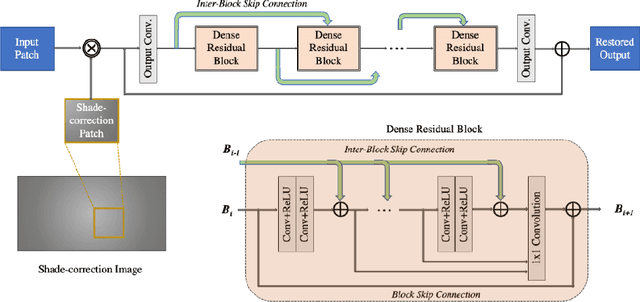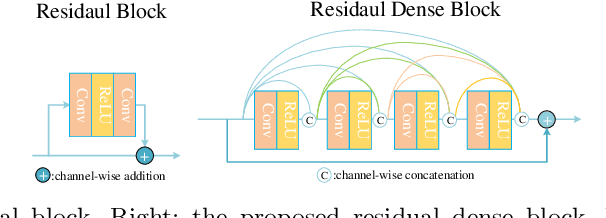Kin Wai Lau
FSSUAVL: A Discriminative Framework using Vision Models for Federated Self-Supervised Audio and Image Understanding
Apr 13, 2025Abstract:Recent studies have demonstrated that vision models can effectively learn multimodal audio-image representations when paired. However, the challenge of enabling deep models to learn representations from unpaired modalities remains unresolved. This issue is especially pertinent in scenarios like Federated Learning (FL), where data is often decentralized, heterogeneous, and lacks a reliable guarantee of paired data. Previous attempts tackled this issue through the use of auxiliary pretrained encoders or generative models on local clients, which invariably raise computational cost with increasing number modalities. Unlike these approaches, in this paper, we aim to address the task of unpaired audio and image recognition using \texttt{FSSUAVL}, a single deep model pretrained in FL with self-supervised contrastive learning (SSL). Instead of aligning the audio and image modalities, \texttt{FSSUAVL} jointly discriminates them by projecting them into a common embedding space using contrastive SSL. This extends the utility of \texttt{FSSUAVL} to paired and unpaired audio and image recognition tasks. Our experiments with CNN and ViT demonstrate that \texttt{FSSUAVL} significantly improves performance across various image- and audio-based downstream tasks compared to using separate deep models for each modality. Additionally, \texttt{FSSUAVL}'s capacity to learn multimodal feature representations allows for integrating auxiliary information, if available, to enhance recognition accuracy.
FedRepOpt: Gradient Re-parameterized Optimizers in Federated Learning
Sep 25, 2024Abstract:Federated Learning (FL) has emerged as a privacy-preserving method for training machine learning models in a distributed manner on edge devices. However, on-device models face inherent computational power and memory limitations, potentially resulting in constrained gradient updates. As the model's size increases, the frequency of gradient updates on edge devices decreases, ultimately leading to suboptimal training outcomes during any particular FL round. This limits the feasibility of deploying advanced and large-scale models on edge devices, hindering the potential for performance enhancements. To address this issue, we propose FedRepOpt, a gradient re-parameterized optimizer for FL. The gradient re-parameterized method allows training a simple local model with a similar performance as a complex model by modifying the optimizer's gradients according to a set of model-specific hyperparameters obtained from the complex models. In this work, we focus on VGG-style and Ghost-style models in the FL environment. Extensive experiments demonstrate that models using FedRepOpt obtain a significant boost in performance of 16.7% and 11.4% compared to the RepGhost-style and RepVGG-style networks, while also demonstrating a faster convergence time of 11.7% and 57.4% compared to their complex structure.
AudioRepInceptionNeXt: A lightweight single-stream architecture for efficient audio recognition
Apr 21, 2024Abstract:Recent research has successfully adapted vision-based convolutional neural network (CNN) architectures for audio recognition tasks using Mel-Spectrograms. However, these CNNs have high computational costs and memory requirements, limiting their deployment on low-end edge devices. Motivated by the success of efficient vision models like InceptionNeXt and ConvNeXt, we propose AudioRepInceptionNeXt, a single-stream architecture. Its basic building block breaks down the parallel multi-branch depth-wise convolutions with descending scales of k x k kernels into a cascade of two multi-branch depth-wise convolutions. The first multi-branch consists of parallel multi-scale 1 x k depth-wise convolutional layers followed by a similar multi-branch employing parallel multi-scale k x 1 depth-wise convolutional layers. This reduces computational and memory footprint while separating time and frequency processing of Mel-Spectrograms. The large kernels capture global frequencies and long activities, while small kernels get local frequencies and short activities. We also reparameterize the multi-branch design during inference to further boost speed without losing accuracy. Experiments show that AudioRepInceptionNeXt reduces parameters and computations by 50%+ and improves inference speed 1.28x over state-of-the-art CNNs like the Slow-Fast while maintaining comparable accuracy. It also learns robustly across a variety of audio recognition tasks. Codes are available at https://github.com/StevenLauHKHK/AudioRepInceptionNeXt.
Exploring Federated Self-Supervised Learning for General Purpose Audio Understanding
Feb 05, 2024Abstract:The integration of Federated Learning (FL) and Self-supervised Learning (SSL) offers a unique and synergetic combination to exploit the audio data for general-purpose audio understanding, without compromising user data privacy. However, rare efforts have been made to investigate the SSL models in the FL regime for general-purpose audio understanding, especially when the training data is generated by large-scale heterogeneous audio sources. In this paper, we evaluate the performance of feature-matching and predictive audio-SSL techniques when integrated into large-scale FL settings simulated with non-independently identically distributed (non-iid) data. We propose a novel Federated SSL (F-SSL) framework, dubbed FASSL, that enables learning intermediate feature representations from large-scale decentralized heterogeneous clients, holding unlabelled audio data. Our study has found that audio F-SSL approaches perform on par with the centralized audio-SSL approaches on the audio-retrieval task. Extensive experiments demonstrate the effectiveness and significance of FASSL as it assists in obtaining the optimal global model for state-of-the-art FL aggregation methods.
Adaptive Uncertainty Estimation via High-Dimensional Testing on Latent Representations
Oct 25, 2023Abstract:Uncertainty estimation aims to evaluate the confidence of a trained deep neural network. However, existing uncertainty estimation approaches rely on low-dimensional distributional assumptions and thus suffer from the high dimensionality of latent features. Existing approaches tend to focus on uncertainty on discrete classification probabilities, which leads to poor generalizability to uncertainty estimation for other tasks. Moreover, most of the literature requires seeing the out-of-distribution (OOD) data in the training for better estimation of uncertainty, which limits the uncertainty estimation performance in practice because the OOD data are typically unseen. To overcome these limitations, we propose a new framework using data-adaptive high-dimensional hypothesis testing for uncertainty estimation, which leverages the statistical properties of the feature representations. Our method directly operates on latent representations and thus does not require retraining the feature encoder under a modified objective. The test statistic relaxes the feature distribution assumptions to high dimensionality, and it is more discriminative to uncertainties in the latent representations. We demonstrate that encoding features with Bayesian neural networks can enhance testing performance and lead to more accurate uncertainty estimation. We further introduce a family-wise testing procedure to determine the optimal threshold of OOD detection, which minimizes the false discovery rate (FDR). Extensive experiments validate the satisfactory performance of our framework on uncertainty estimation and task-specific prediction over a variety of competitors. The experiments on the OOD detection task also show satisfactory performance of our method when the OOD data are unseen in the training. Codes are available at https://github.com/HKU-MedAI/bnn_uncertainty.
Large Separable Kernel Attention: Rethinking the Large Kernel Attention Design in CNN
Sep 06, 2023Abstract:Visual Attention Networks (VAN) with Large Kernel Attention (LKA) modules have been shown to provide remarkable performance, that surpasses Vision Transformers (ViTs), on a range of vision-based tasks. However, the depth-wise convolutional layer in these LKA modules incurs a quadratic increase in the computational and memory footprints with increasing convolutional kernel size. To mitigate these problems and to enable the use of extremely large convolutional kernels in the attention modules of VAN, we propose a family of Large Separable Kernel Attention modules, termed LSKA. LSKA decomposes the 2D convolutional kernel of the depth-wise convolutional layer into cascaded horizontal and vertical 1-D kernels. In contrast to the standard LKA design, the proposed decomposition enables the direct use of the depth-wise convolutional layer with large kernels in the attention module, without requiring any extra blocks. We demonstrate that the proposed LSKA module in VAN can achieve comparable performance with the standard LKA module and incur lower computational complexity and memory footprints. We also find that the proposed LSKA design biases the VAN more toward the shape of the object than the texture with increasing kernel size. Additionally, we benchmark the robustness of the LKA and LSKA in VAN, ViTs, and the recent ConvNeXt on the five corrupted versions of the ImageNet dataset that are largely unexplored in the previous works. Our extensive experimental results show that the proposed LSKA module in VAN provides a significant reduction in computational complexity and memory footprints with increasing kernel size while outperforming ViTs, ConvNeXt, and providing similar performance compared to the LKA module in VAN on object recognition, object detection, semantic segmentation, and robustness tests.
AudioInceptionNeXt: TCL AI LAB Submission to EPIC-SOUND Audio-Based-Interaction-Recognition Challenge 2023
Jul 14, 2023Abstract:This report presents the technical details of our submission to the 2023 Epic-Kitchen EPIC-SOUNDS Audio-Based Interaction Recognition Challenge. The task is to learn the mapping from audio samples to their corresponding action labels. To achieve this goal, we propose a simple yet effective single-stream CNN-based architecture called AudioInceptionNeXt that operates on the time-frequency log-mel-spectrogram of the audio samples. Motivated by the design of the InceptionNeXt, we propose parallel multi-scale depthwise separable convolutional kernels in the AudioInceptionNeXt block, which enable the model to learn the time and frequency information more effectively. The large-scale separable kernels capture the long duration of activities and the global frequency semantic information, while the small-scale separable kernels capture the short duration of activities and local details of frequency information. Our approach achieved 55.43% of top-1 accuracy on the challenge test set, ranked as 1st on the public leaderboard. Codes are available anonymously at https://github.com/StevenLauHKHK/AudioInceptionNeXt.git.
UDC 2020 Challenge on Image Restoration of Under-Display Camera: Methods and Results
Aug 18, 2020



Abstract:This paper is the report of the first Under-Display Camera (UDC) image restoration challenge in conjunction with the RLQ workshop at ECCV 2020. The challenge is based on a newly-collected database of Under-Display Camera. The challenge tracks correspond to two types of display: a 4k Transparent OLED (T-OLED) and a phone Pentile OLED (P-OLED). Along with about 150 teams registered the challenge, eight and nine teams submitted the results during the testing phase for each track. The results in the paper are state-of-the-art restoration performance of Under-Display Camera Restoration. Datasets and paper are available at https://yzhouas.github.io/projects/UDC/udc.html.
 Add to Chrome
Add to Chrome Add to Firefox
Add to Firefox Add to Edge
Add to Edge